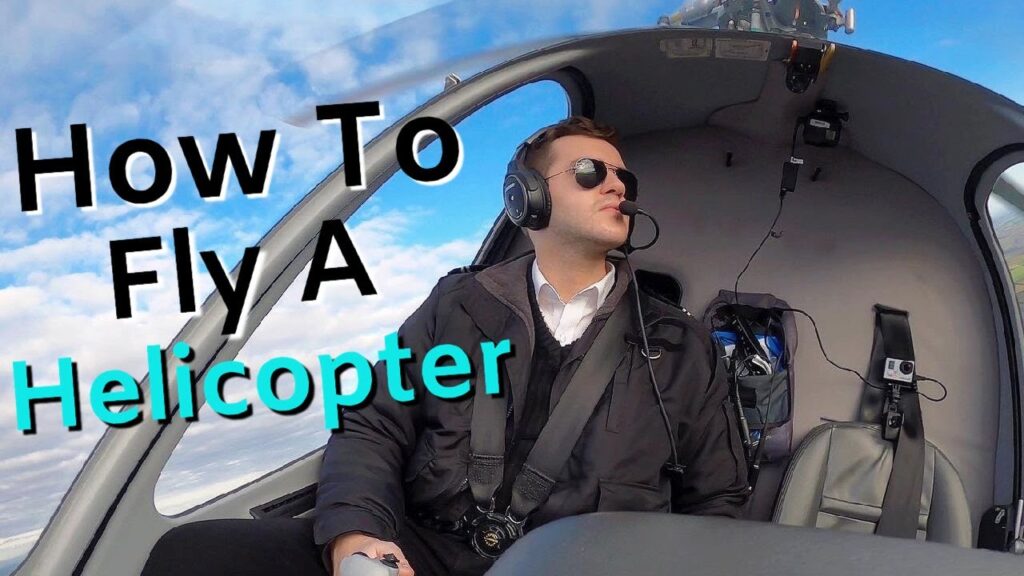The Ultimate Guide to Helicopter Flight Training Materials
Embarking on the journey to become a helicopter pilot is an exhilarating decision that can lead to breathtaking views and high-flying career opportunities. The foundation of this adventure begins with choosing the right flight training materials. These resources are instrumental in helping aspiring pilots understand the complexities of helicopter mechanics, aerodynamics, and navigation.
Flight Manuals and Textbooks are indispensable tools for any helicopter pilot trainee. These texts provide in-depth information on flight principles, emergency procedures, and checklists for pre-flight, in-flight, and post-flight operations. Regulatory bodies, such as the Federal Aviation Administration (FAA), often have recommended reading lists, which include essential handbooks like the Helicopter Flying Handbook and the Pilot’s Handbook of Aeronautical Knowledge.
Online Courses and Multimedia can enhance the learning experience beyond traditional textbooks. Interactive modules, video tutorials, and flight simulators offer a multi-dimensional approach to mastering the skills needed for helicopter piloting. These resources cater to different learning styles and allow trainees to visualize maneuvers and understand flight concepts thoroughly before taking to the skies.
Comprehensive understanding of Navigation Charts and Flight Planning Software is crucial for safe and efficient flying. Pilots must be adept at reading sectional charts, terminal area charts, and helicopter route charts. Flight planning software aids in plotting courses, calculating fuel requirements, and understanding airspace restrictions, which is vital for both training and real-world flying.
Lastly, maintaining a Flight Training Logbook is critical for tracking progress and ensuring all necessary skills and hours are logged as per the requirements of helicopter pilot certification. A logbook serves as a legal record of a pilot’s experience and is an essential component when undergoing evaluations and seeking employment. As part of training materials, it assists trainees in identifying areas of proficiency and those requiring further attention.
Essential Applications for Aspiring Helicopter Pilots
Becoming a skilled helicopter pilot in the USA requires more than just hands-on flight training. As technology advances, several applications have become indispensable tools in the flight bag of aspiring aviators. These applications aid in flight planning, weather forecasting, and even in-flight navigation, ensuring that pilots are well-prepared to take to the skies safely and efficiently.
Flight Planning and Navigation Apps
Before takeoff, any seasoned pilot will confirm the importance of a meticulously planned route. That’s where flight planning applications come into play. Apps such as ForeFlight and Garmin Pilot allow pilots to plot their intended flight path, calculate fuel requirements, and have real-time access to NOTAMs and TFRs. These digital platforms can provide updated navigational charts, airport directories, and detailed performance calculations, which are essential for both pre-flight preparations and in-flight adjustments.
Weather Tracking and Reporting Tools
In aviation, understanding the weather is non-negotiable. Inclement conditions can pose severe risks during flight, especially in a helicopter. Therefore, it’s crucial to have reliable weather tracking apps such as MYRadar or AeroWeather. These apps provide aspiring helicopter pilots with up-to-the-minute weather reports, radar imagery, and forecasts. Pilots can monitor for any potential weather disruptions along their route or at their destination, ensuring the highest level of safety during their aerial tours across the USA.
Helicopter Training PDFs: Your Key to Success
Embarking on a journey to become a helicopter pilot is an exhilarating decision that requires dedication and access to high-quality resources. Among the tools at the disposal of aspiring aviators are a plethora of Helicopter Training PDFs. These valuable documents offer a rich source of information covering all facets of helicopter flight, from aerodynamics to cockpit procedures.
For beginners, understanding the principles of helicopter flight can be daunting. However, with well-structured training manuals and guides in PDF format, students can learn at their own pace. Topics ranging from basic rotorcraft theory to advanced navigation are methodically explained, providing a solid foundation for practical flight training.
Advanced students will also find the helicopter training PDFs indispensable. Complex subjects such as meteorology, flight planning, and emergency procedures are covered in detail. These documents are often used in conjunction with simulator sessions, allowing students to familiarize themselves with various scenarios and equipment before stepping into the actual cockpit.
Furthermore, the ease of access to these PDFs ensures that knowledge is never beyond reach. Whether you’re on the move or at home, these resources can be downloaded to any device, making it possible to study whenever the opportunity arises. This flexibility is crucial for those balancing other commitments with their aspiration to fly helicopters.
Maximizing Your Learning with Helicopter Flight Manuals
Before you embark on your first helicopter tour, delving into flight manuals may seem daunting, yet it is essential for a broader understanding of the experience ahead. Flight manuals are treasure troves of information, containing intricate details about helicopter models, control systems, and emergency procedures. By familiarizing yourself with these manuals, you gain a comprehensive backdrop to what goes on in the cockpit, enhancing the awe during your airborne adventure.
Flight manuals meticulously outline the technical aspects of helicopter operations, which, when studied, can transform passengers from mere spectators to informed enthusiasts. For instance, understanding the principles of rotary-wing aerodynamics allows you to appreciate the pilot’s skill in maneuvering the aircraft through different altitudes and weather conditions. It’s the attention to these subtle details that enriches the overall tour experience.
Interpreting Weather and Navigation Data
Weather greatly impacts helicopter flights, and flight manuals provide extensive guidance on weather interpretation. By learning to decode this information, you can anticipate route changes and recognize the critical role weather plays in aviation safety. Moreover, getting acquainted with navigation charts and airspace classifications can give you a glimpse into the complexity of aerial navigation, adding a layer of intellectual engagement to your sightseeing trip.
Emergency Protocols and Safety Procedures
Helicopter flights are remarkably safe, but knowing the emergency protocols and safety procedures detailed in the manuals can boost your confidence. Not only does it reassure you of the care taken to ensure passenger wellbeing, but it also empowers you, as a knowledgeable passenger, to understand the safety briefings better and to know what to expect in the unlikely event of an emergency.
In the end, studying helicopter flight manuals does not merely equip you with facts and figures about these magnificent machines; it immerses you in the art and science of aviation. By engaging with the content of these manuals, you not only prepare for a visually spectacular tour but also set the stage for a rich, educational journey that will linger in your memory long after the helicopter has landed.
Navigating The World of Helicopter Training Aids
Aspiring helicopter pilots are faced with a multitude of training aids, each designed to enhance a specific area of their flying skills. From advanced flight simulation software to detailed instructional books, these tools play an indispensable role in a pilot’s education. Knowing which ones to invest time and resources in can be a daunting task. However, prioritizing training aids that align with one’s learning style and the required competencies of helicopter piloting can significantly streamline the process.
Simulation technology has grown by leaps and bounds, offering trainees the opportunity to experience lifelike flight scenarios without leaving the ground. These high-fidelity simulators are not just video games; they replicate the helicopter’s controls, responses, and even weather conditions, providing an immersive environment that’s conducive to learning. They are particularly beneficial for practicing emergency procedures, instrument navigation, and familiarizing oneself with various helicopter models.
Alongside simulators, interactive learning modules are becoming increasingly popular among trainees. Interactive modules can help reinforce theoretical knowledge through engaging, hands-on activities. They often include quizzes, 3D models, and interactive diagrams, which help students grasp complex concepts such as aerodynamics, engine mechanics, and navigation. These training aids are accessible on multiple devices, making it easier for students to study on-the-go.
Traditional training aids like textbooks and manuals remain fundamental to a pilot’s education. These resources provide comprehensive knowledge of helicopter operations, maintenance, and safety protocols. Students should look for books that are up-to-date with the latest regulations and technological advancements in the field of aviation. Well-structured reading materials can serve as a reference throughout a pilot’s career, long after the initial training has been completed.
Streamlining Your Flight Training with Digital Resources
The advent of digital resources has revolutionized the way flight training is conducted. Gone are the days when prospective pilots relied solely on textbooks and one-on-one instruction to master the skies. With a plethora of online courses, simulators, and interactive platforms, flight training can now be more efficient and tailored to individual learning styles. Resources such as high-definition video tutorials, virtual reality environments, and downloadable manuals provide flexible and immersive learning experiences, ensuring that students can practice and absorb critical information at their own pace.
Flight simulators have become particularly invaluable in streamlining flight training. They offer a risk-free platform for students to experience and navigate diverse flying conditions, understand aircraft operations, and familiarize themselves with cockpit instruments without leaving the ground. These sophisticated tools replicate the physics of flight with remarkable accuracy, allowing trainees to log hours and gain confidence before their real-world flights. The ability to revisit challenging scenarios multiple times helps in reinforcing skills and knowledge which is essential for a safe and competent pilot.
Online communities and forums also play a crucial role in a pilot’s education, providing peer support and a venue for the exchange of information. Here, one can seek advice, discuss concerns, share experiences, and stay updated with the latest industry trends and regulations. Furthermore, smartphone apps can assist with planning flights, checking weather conditions, and ensuring that all necessary documentation and regulations are at a pilot’s fingertips. The digital era has indeed ushered in a new horizon for helicopter tour training, making it more accessible and effective than ever before.






